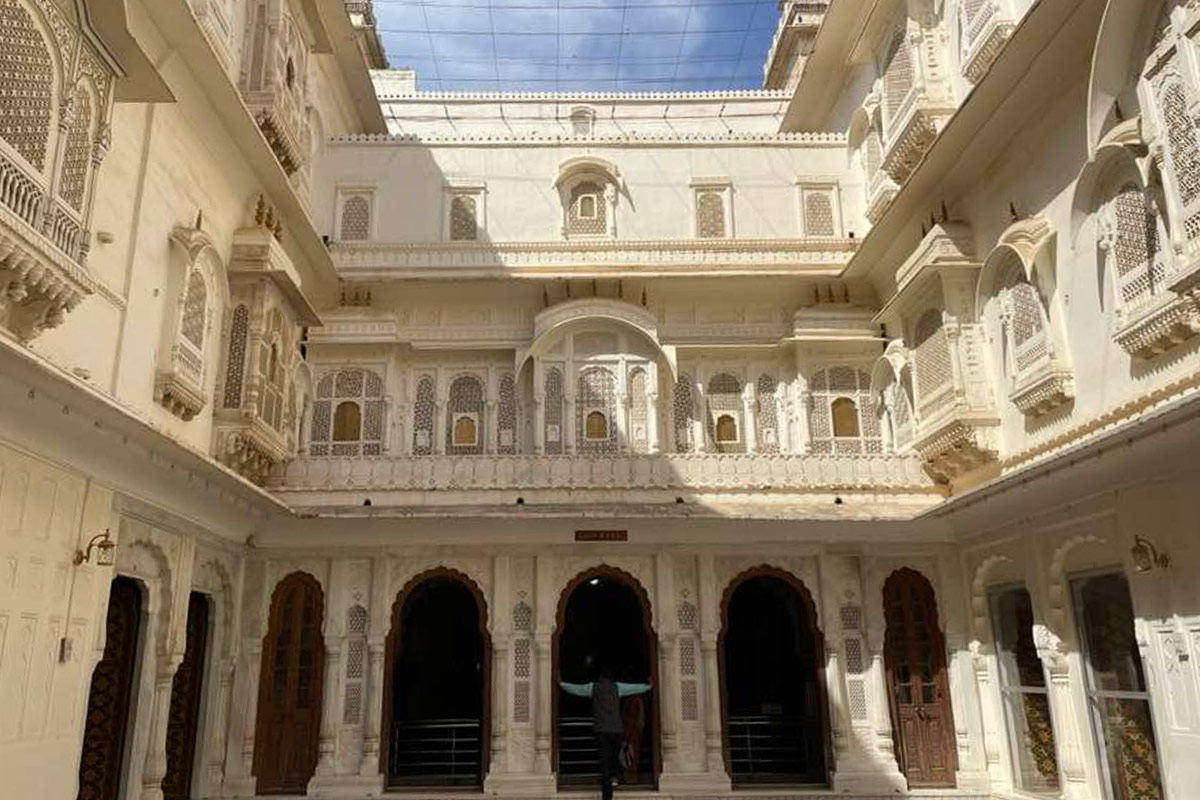India Part 4: Artwork Inspiration at Junagarh Fort – A Maharaja’s Legacy
Mark Clark’s journey through India continues with a stop at the captivating Junagarh Fort in Bikaner, a place brimming with history, intricate architecture, and fascinating stories of India’s royal heritage. Built by the first Maharaja Singh in the 16th century, Junagarh Fort is a masterpiece of filigree work, with ornate details and a complex layout designed to protect the ruling family. The fort provides endless artwork inspiration for Mark, offering fresh ideas for his upcoming pieces.
Junagarh Fort: A Study in Filigree and Architecture
Junagarh Fort’s detailed carvings, arches, and latticework are each a marvel of artistic skill and precision. The architecture showcases a blend of Rajput, Mughal, and Gujarati styles, each hall and courtyard adding layers to the story of this 16th-century fortress. For an artist, these details are pure artwork inspiration; the geometric designs, floral motifs, and delicate latticework give Mark new ways to explore texture, pattern, and cultural expression.
As Mark walked through the corridors of Junagarh Fort, he was particularly struck by the intricacy of the filigree work. The carvings tell their own story of the artistry and devotion that went into every corner of the fort. Imagining how these fine details could be translated into linework, shading, or even abstracted forms in his paintings, Mark found himself sketching out ideas that captured the spirit of Junagarh’s architecture.
The Maharaja’s Tiny Bed: A Story of Resilience
One unusual element that stood out was the Maharaja’s bed, a surprisingly small piece for a king’s quarters. Local lore has it that this unique bed design was created after an attempt on the king’s life by the Mughal invaders. Originally, kings would sleep on large, double-sized beds, but when the Mughals broke into the fort, they managed to strap the Maharaja to his bed before fatally attacking him. To prevent this from happening again, the bed size was reduced, making it easier for a future king to escape in case of another attack.
This story of ingenuity and resilience in the face of adversity adds another layer of inspiration to Mark’s journey. He’s already thinking about ways to incorporate this theme into his work—perhaps capturing the spirit of resilience in a series that combines historical elements with modern symbolism. The idea of creating art that speaks to both vulnerability and strength is a theme that feels fresh and relevant, even centuries after the story first unfolded.
Artwork Inspiration in the Everyday
Beyond the architectural wonders and historic tales, Mark found inspiration in the small moments, too. Sampling a bit of local “Ben & Jerry’s” ice cream after a day exploring the fort was a fun reminder that art doesn’t have to be serious to be meaningful. Mark was delighted by the quirky, everyday life of India, each new experience adding unexpected layers to his artwork inspiration.
There’s a certain vibrancy and humor in Indian culture, seen in everything from local treats to the way stories are told with a playful twist. These moments of lightheartedness balance the grandeur of places like Junagarh Fort and offer a fresh approach for future pieces that combine formal structure with a touch of spontaneity and joy.
Final Thoughts: Transforming Inspiration into Art
With his journey through India unfolding, Mark finds himself increasingly inspired by the country’s rich heritage, complex history, and surprising quirks. Junagarh Fort has shown him a glimpse of both the resilience and beauty embedded in India’s past, and he’s excited to carry these ideas forward into his work.
Stay tuned for more updates as Mark’s travels continue, and he dives deeper into the landscapes, legends, and lively culture of India, transforming each encounter into fresh artwork that captures the essence of this vibrant country.
For more information on Mark’s amazing Indian inspired pieces contact
Mark Clark Fine Art.


